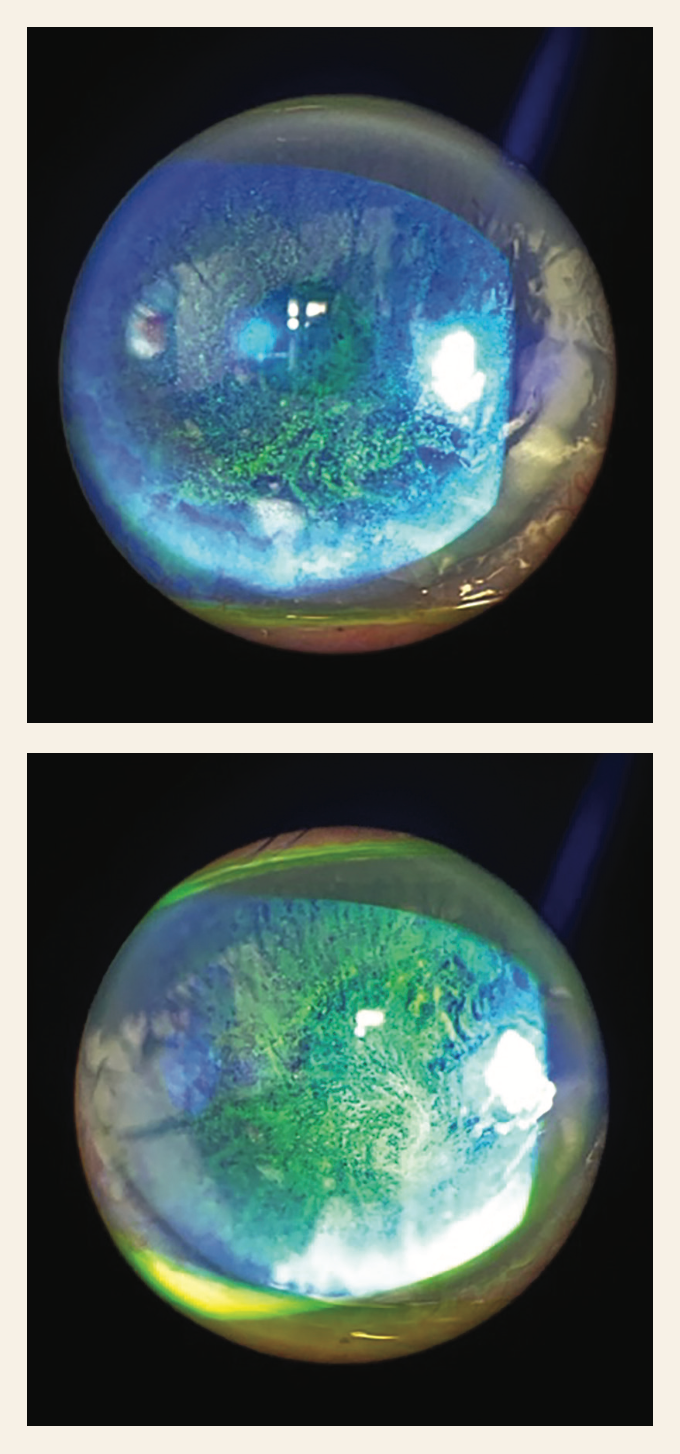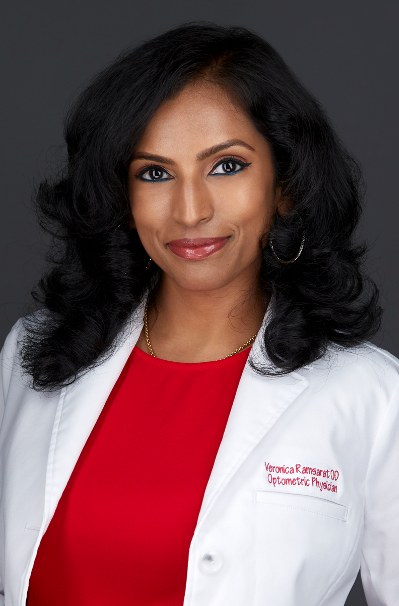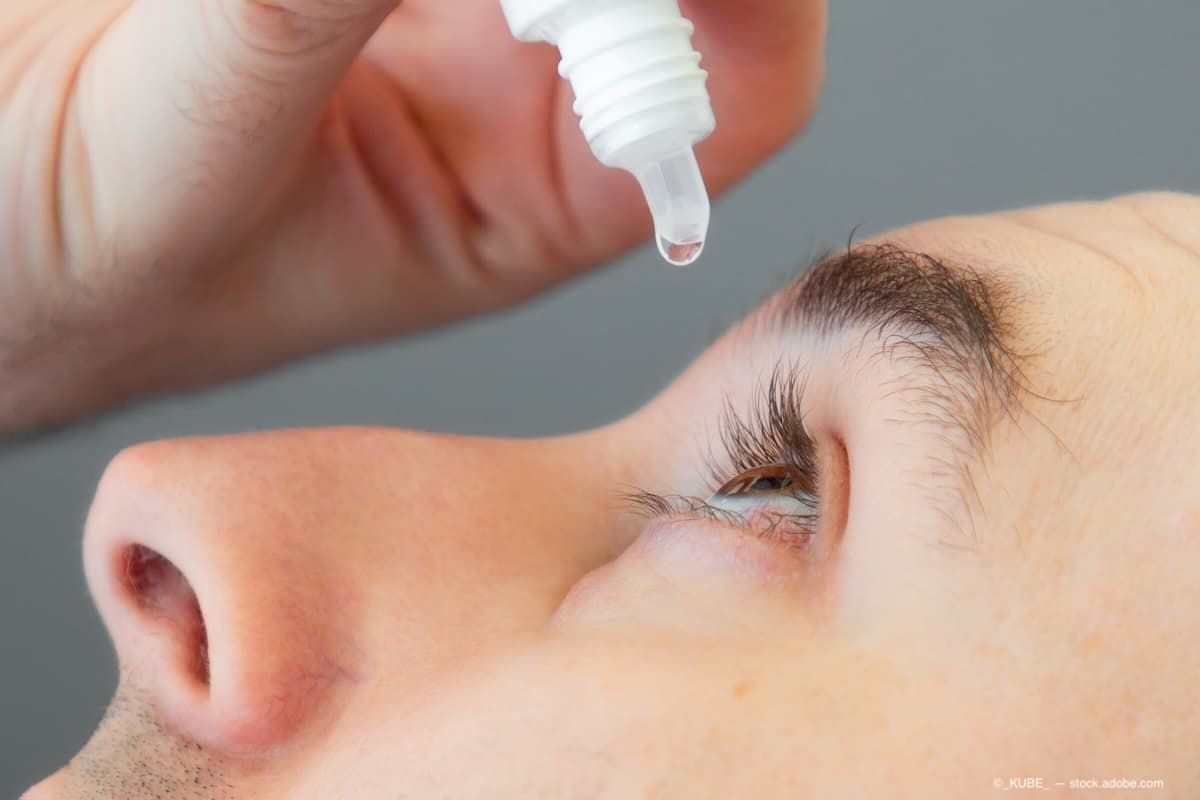Publication
Article
Digital Edition
Diagnosis and treatment: Manage dry eye with these tips
Author(s):
Physicians explain how winter exacerbates symptoms of disease.
Two photos taken of a patient with dry eye which are currently treated with cyclosporine drops, omega 3 supplements, punctal plugs and amniotic membrane. (Images courtesy of James Kelly MD)

Reviewed by James Kelly, MD, and Veronica Ramsarat, OD
Dry eye disease affects millions of individuals in the United States alone. Several factors can trigger and exacerbate the condition, some of which are easier to fix than others.
James Kelly, MD

James Kelly, MD, and Veronica Ramsarat, OD, both from the Kelly Vision Center in New York City, New York, share their clinical pearls for avoiding aggravating factors and managing signs and symptoms.
Identifying the problem
“Dry eye is a frequent cause of both decreased visual quality and ocular irritation and is best addressed through a multimodality approach,” Kelly says.
Winter is dry eye season. An environment that includes strong winds, low humidity, cold temperatures, and indoor heating systems is instrumental in causing and exacerbating dry eye. However, certain diseases such as diabetes, sleep apnea, allergies, or cosmetic procedures such as blepharoplasty can also factor into the dry eye equation, they explain.
For both specialists, good history-taking is paramount when faced with potential dry eye in a patient.
Veronica Ramsarat, OD

"A detailed history is the hallmark for diagnosis and treatment,” Kelly says, adding that it gives the physician the opportunity to identify the factors causing ocular discomfort.
Standard testing (eg, osmolarity, Schirmer test, and meibography) provides quantifiable information before a slit lamp evaluation is conducted.
During diagnosis, differentiating allergy symptoms from dry eye symptoms can be challenging because the 2 disorders share some common ground and are not always easy to separate, Kelly says. Diagnosis may require more questioning of patients to better pinpoint the problem.
Cosmetic allergies associated with eye creams and makeup are a common finding in Ramsarat’s patients. Despite using products for decades without any negative consequences, patients can develop an allergic dermatitis remarkably fast, she notes.
It is important to recognize that dry eye can be an early manifestation of systemic disease. Therefore, finding the root cause is essential to formulating a treatment plan, Ramsarat explains. Behavioral modification, lubricating drops, prescription drops, and medical procedures represent the sequence of dry eye management.
Less is more
Upon establishing a dry eye diagnosis, Ramsarat emphasizes the importance of lifestyle changes that may lessen patients’ ocular discomfort. A simple change such as using a humidifier in the bedroom benefits the ocular surface and the skin.
One of the biggest causes of dry eye is excessive time spent working with electronic devices—computers, tablets, or smartphones—which put patients at higher risk for dry eye.
Kelly says he encourages patients to take regular breaks from screen time to help alleviate dry eye symptoms. Along the same line, Ramsarat notes that she uses the 20-20-20 rule: 20-second breaks every 20 minutes, during which the patient looks away from the electronic screen and out to a distance of about 20 ft, accompanied by extra eye blinks.
Following lifestyle changes, which may be adequate for some patients, Kelly advises using over-the-counter (OTC), preservative-free artificial tears. These can be followed by prescription drops and medical procedures depending on patients’ responses.
Regarding OTC drops, finding a formulation that works best to relieve ocular symptoms is a trial-and-error process for patients who may have to try several different drops to find adequate relief. Their individualized responses are dependent on preservatives, viscosity, pH, drop osmolarity, and characteristics of the tear film.
Loteprednol (Lotemax; Bausch + Lomb), cyclosporine (Mylan Pharmaceuticals, Inc), and lifitegrast (Xiidra; Shire US, Inc) are the next-level therapies after OTC tears that Kelly prescribes, especially for patients with symptoms during the winter. Loteprednol rapidly alleviates symptoms within a few days. Kelly initiates loteprednol following a 1- to 2-week pulse of drop instillation 4 times daily and may simultaneously initiate lifitegrast or cyclosporine.
For patients with more severe dry eye, the use of warming devices applied to the eye lids is beneficial. Intense pulsed light for inflammation, thermo- pulsation for meibomian gland dysfunction, and photodynamic therapy provide more immediate relief for dry eye that is refractory to other therapies. These can be used in addition to microblepharoexfoliation and punctal occlusion.
Ramsarat also combines various levels of therapies to achieve the maximum benefit. She may advise patients to use OTC tears between treatments such as lid therapy and an in-office procedure.
James Kelly, MD
E: jameskelly1@aol.com
Kelly is in private practice at Kelly Vision Center in New York City, New York. He has no financial interest in this subject matter.
Veronica Ramsarat, OD
E: veronica.ramsarat@gmail. com
Ramsarat practices at Kelly Vision Center in New York City, New York. She has no financial interest in this subject matter.

Newsletter
Don’t miss out—get Ophthalmology Times updates on the latest clinical advancements and expert interviews, straight to your inbox.




